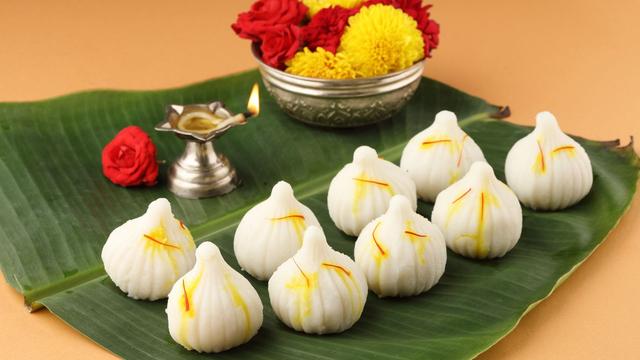Learn
Cooking for Memory: How Shradh Food Acts As A Bridge
5 min read
Posted on 21/09/2025
Quick Summary
The timeless circle of life and death has led many societies to build systems and rituals that help the living process the grief and celebrate the memory of the departed. One such ritual is Shradh in Hinduism. It’s an annual 16-day period where individuals pay homage to the departed, with a goal to keep alive their memories, teachings, and traditions. And when it comes to honoring and remembering our loved ones, few things bring the same comfort and peace as food.
Deep Dive
Each of the three pillars of Hindu Shradh—rituals, prayers, and food—has a role to play in strengthening the bond between the living and the ancestral realm. Food, especially, acts as a bridge between the two, symbolising sustenance for the departed and spiritual liberation for the living. Shradh food, designed to be sattvic, is supposed to help our ancestors attain salvation and relief in the afterlife. But, beyond the ritualistic significance, lies a tale of nourishment and remembrance.
How Shradh Came To Be
The origins of Shradh can be found in ancient Hindu scriptures. As per many records, it is said that Lord Brahma shared the knowledge of Shradh with his son, Rishi Nimi. Rishi Nimi, guided by Narad Muni, performed the ritual to invoke his ancestors and received their blessings. It was thus established that honoring and feeding departed souls ensures their peace and symbolises love, gratitude, and responsibility towards one’s ancestors.
Like most things in Hindu culture, the story serves a deeper meaning. It’s a reminder not to forget our roots. And to always look to our ancestors for support and guidance.
The Guiding Principles Of Shradh Food
Different regions have different rituals during Shradh. However, certain principles guide what items to use and even the way food is served.
- What to avoid: Non-vegetarian food, garlic, onion, and even turmeric and saffron are avoided. Root vegetables like potatoes or sweet potatoes are also prohibited.
- What to include: While menus can differ between families and regions, a Shradh meal must include one sweet item, a dairy product (like curd), one vegetable dish, one lentil dish, flatbreads or puffed breads (ideally puris) made from a staple grain, rice, and a beverage (usually water). Usually, families include one additional item - something their ancestors were fond of. You can always add more than one dessert or curry to the plate. All food is cooked in ghee.
- How to serve: Food is ideally served on plates made from woven leaves or a single banana leaf. Some customs also define the exact placement of the food items, along with the placement of the leaf-plate.
Flavours: A Vessel For Memory
The period of mourning, for many, is often marked by detachment from other people, indulgences, and even food. Shradh, on the other hand, gently pushes you to once again embrace connection. And food and flavors become the vessels for this. It’s why the food chosen during Shradh is never meant to excite the body; just sustain it.
Many families try to include at least one item in the menu that their ancestors loved and enjoyed. The reason is simple and obvious – it’s a way to remember them through food. In cooking what a loved one cherished the most, one not only remembers but relives the joy their loved ones experienced with food. Because, much like life and death, joy and grief exist together. And Shradh food enables us to embrace and accept that reality. That’s how cooking becomes a memory and food, a bridge between the living and departed.

The Other Role Of Food In Shradh
The Shradh food is supposed to be cooked without onion or garlic (tamsic components), tends to include at least one sweet item, and, if possible, an item that their ancestors especially loved. Here’s why:
Sustenance: As per Hinduism, spirits can linger between heaven (place of eternal salvation) and earth (the land of the living) if they have unfulfilled desires or pending spiritual debt/karma. Food, thus, acts as nourishment for the souls who are yet to attain salvation.
Peace: It’s generally believed that the rituals and offerings help fulfill unexpressed desires of the ancestors, ensuring their souls find peace and can move on to a higher realm.
Blessings: Another guiding thought behind Shradh is that paying homage to our ancestors helps us earn their blessings for a long, happy, and prosperous life.
As part of Shradh, food is offered to Brahmins (who are believed to act as conduits, helping ancestors receive the offerings) and the poor and needy (for cosmic and spiritual benevolence). Additionally, food is also served to animals, especially cows (considered to be sacred) and crows (considered to be the messengers of the departed).
Food: A Bridge & A Blessing
Rituals can sometimes appear to be daunting and confusing, especially if their meaning is lost to time. However, the role of food in preserving a memory and strengthening bonds is a tale as old as time. And thus, Shradh is not just about paying respects and following rituals. It’s also about giving yourself a chance to miss a loved one, seek their blessings, and find muted joy in remembrance through a shared dish.
blurb


